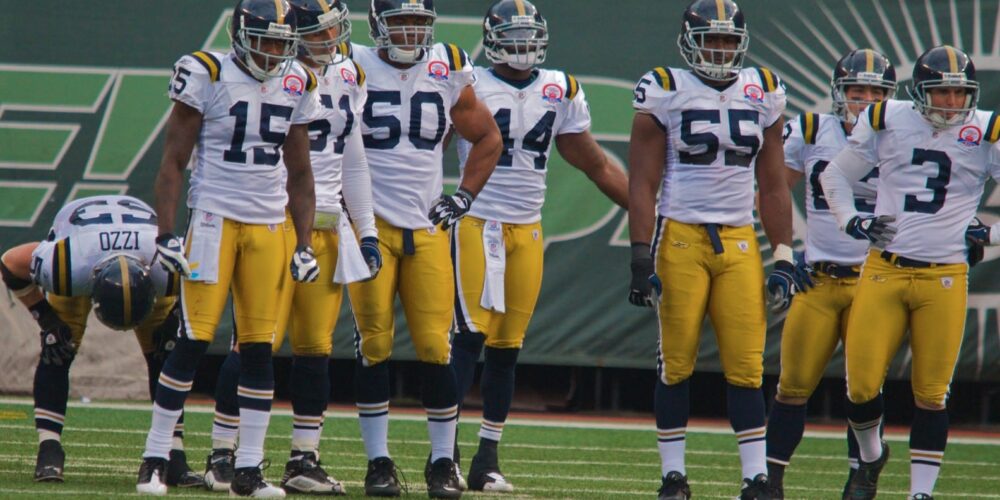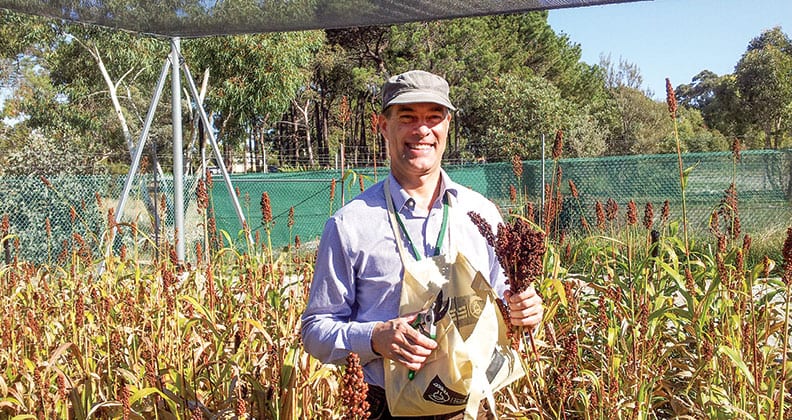Misfortune teller: predicting concussion complications early

While most people recover from concussion within a few weeks, a small group will experience significant psychological and cognitive symptoms long after the injury occurs. Currently, there is no early way of predicting which patients will go on to suffer long-term adverse effects, leaving those at high-risk of complications unlikely to receive appropriate care.
Professor Melinda Fitzgerald and her team from the Curtin Health Innovation Research Institute are conducting novel research that combines a variety of tests to try to predict whether a concussion patient will recover normally or face lasting symptoms.
“It’s relatively easy to diagnose if someone’s had a concussion”, Fitzgerald says. “What we don’t know is whether that person is going to recover in the normal course of events, within a normal timeline, or whether they’re going to go on to have poor outcomes.”
Fitzgerald’s team is examining test results taken within two days from when people present to the emergency department with concussion. They’re looking at a number of different parameters including neuropsychological test outcomes, MRI results and blood biomarkers. Four weeks after the injury, patients are re-tested to check if their symptoms have abated.
“The aim is to see whether any of the markers we measured soon after injury predict a poor outcome,” she says.
Fitzgerald says the research is unlikely to reveal a single ‘magic’ biomarker or measurement that can foretell a protracted recovery.
“Our study is different in that we’re assessing multiple outcomes, so we’re assessing imaging and neuropsychological testing as well as blood biomarkers, with the aim of identifying a suite of outcome measures that may be predictive.”
The work has been part of a pilot study funded by the Neurotrauma Research Program of Western Australia and the Perron Institute for Neurological and Translational Science, with whom Fitzgerald is co-appointed.
Five of the 36 participants who took part in the study showed signs they hadn’t recovered normally. Despite this small sample size, Fitzgerald says the test results of these patients have yielded some promising insights.
“We don’t have the numbers to definitively answer the question, but we have a number of outcomes that may be predictive,” she says.
Fitzgerald plans to broaden the scope of her work to include patients from across Australia, which will ensure she gets the participation rate she needs.
“Curtin has been very supportive and funded us to develop a nationwide initiative to improve outcomes for people following traumatic brain injury of all severities, from concussion right through to the more severe.
“The team is investigating the feasibility of generating a national registry of people with concussion. We want to recruit them into a clinical registry and conduct large-scale trials. It’s a way to get big cohorts and that’s what we need.”
If a suite of predictive measures can be established, it will allow swift diagnosis of those who are most at risk of a poor outcome, so they can receive the care they need from the very early stages. The nature of that care depends on the symptoms of the concussion, which vary, but Fitzgerald says most of the time, effective treatment can put the patient on the road to a full recovery.
“Many of the symptoms of concussion, such as psychological disturbances, depression, anxiety, dizziness and headache can be well managed. With those symptoms it is relatively straightforward to direct someone into the appropriate care,” she explains.
“The one that I think is the most difficult is the cognition – the feeling of fogginess – and that’s the one that I’m most interested in – developing neuroprotective treatments that might be able to actually reverse some of those effects, or better still, prevent them from occurring in the first place.”
Concussion in the age of litigation
In recent years, a severe degenerative brain condition associated with repeated head injuries – chronic traumatic encephalopathy (CTE) – has gained traction in the media and the courtroom. Characterised by mood swings and depression, CTE is thought to have led to the suicide of a number of high-profile retired athletes, including former BMX rider Dave Mirra and American football stars Junior Seau and Dave Duerson, whose untimely deaths informed the storyline of the 2015 Hollywood movie Concussion starring Will Smith.
In 2013, the NFL reached a settlement with 4,500 former players or their estates for concussion-related conditions diagnosed after retirement, including CTE. The landmark agreement provided up to USD$5 million per retired player. In July 2018, it was reported the total amount paid had reached half-a-billion US dollars – enough to sink a humbler league.
Despite this, Fitzgerald believes gaining a greater awareness of concussion and its potential complications shouldn’t be considered a threat to professional sporting codes which, for the most part, are putting stringent measures in place to reduce the incidence of concussion and provide the best care for their players.

She says until more rigorous concussion research is completed, and undeniable proof of a link between repeated concussions and CTE is established, litigators will have a hard time arguing that sporting bodies didn’t provide the appropriate level of care to players.
“To face devastating litigation, the sporting bodies need to have known there was a problem and not done anything about it, and I don’t yet think we’re in a position where we absolutely know there’s a problem. There’s a strong likelihood that there is, and sporting bodies are acting accordingly,” she says.
“There are legitimate concerns with some previous studies because they weren’t controlled appropriately. We’re at a stage where more longitudinal, properly controlled studies need to be done, and people are doing them, so we will know in around five years whether or not there really is undeniable proof. We’re not quite there, but we’re very close.
“I think it will lead to better management of concussion by the governing bodies, and also, the footballer with a clear understanding can make an informed decision.”



